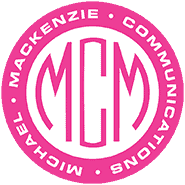In the arena of promotion, marketing and communications, few things are more important than prospect and client follow-through. To update business professionals on new offerings, persuade them to attend a webinar, or even just visit your website, many companies turn to email automation.
With such an approach, the sender can create multiple messages in advance, load them into an email marketing platform, set the release date and time, and press “Schedule.” The messages, complete with contact information, reminders and other details, will be delivered to the attended recipients as scheduled. In some cases, organizations use email automation as a follow-up tool, for example, if someone has visited their website or seen a social media post, and wants more information.
While many companies are still operating purely virtually, automation is an especially good way for businesses to remain in touch with as many people as possible. However, as with nearly all automated efforts, the program can break down — and it is almost always due to human error.
When Humans Get in the Way of Technology
Here’s a perfect example. I recently received an invitation to a virtual technology conference covering topics relevant to one of our client’s business models. I skimmed the agenda and discovered that there were sessions of value and that our client was speaking on the second day. The conference was sponsored by an association of which I am not a full member. However, I do have a base (free) membership that for which I signed up to follow activities relevant to our clients.
Curious as to whether they would even allow me to attend, I filled out the request form. I was gratified to receive a message saying they were “confirming my information” and would send me the link. By the time the conference had started, I still hadn’t received the link.
I kept checking, but no link or notification ever arrived. Not only did I miss the sessions related to our client challenges; I also missed the client’s presentation at the event.
Throughout this period, however, the conference kept sending me reminders that the programs I signed up for were about to start. They even asked me to fill out a survey at the end to share my thoughts. A day after the conference ended, I received a notice that my credentials were not sufficient for approval and therefore I would not receive a link.
Needless to say, I dug that survey request out and shared my thoughts.
I am not suggesting the conference had any obligation to accept my credentials, but I wonder how many other people had the same experience. Someone on their marketing team should have established parameters in the email automation platform so conference event reminders went only to confirmed registrants.
It’s possible that two different email systems were operating at the same time — one for conference sign ups, and one for reminders. Even if that were the case, the marketing team, and not the automation platforms, were responsible for ensuring emails went to appropriate people.
I was just a technology copywriter trying to glean insight for client materials. However, imagine if I had been the owner of a hot startup that was considering sponsoring their next event. That person might have said, “They can’t even get email automation right. They must not be very tech-savvy. Let’s sponsor something else.”
Email automation is a great enabler, but it can also damage reputations if not managed properly. That’s the reason shrewd business leaders rely upon professional marketing and communications firms to handle their automated marketing campaigns. They ensure email campaigns are set up correctly and execute as planned. They can also take quick action if situations change.
This post is courtesy of MMC Content Manager Jennifer Farwell



